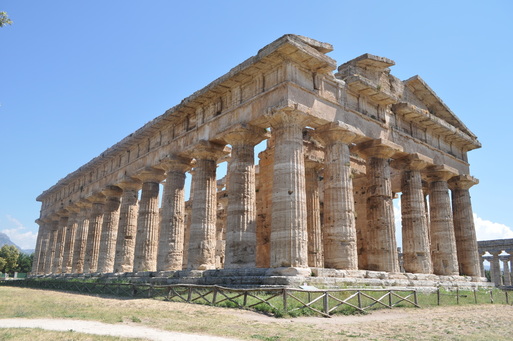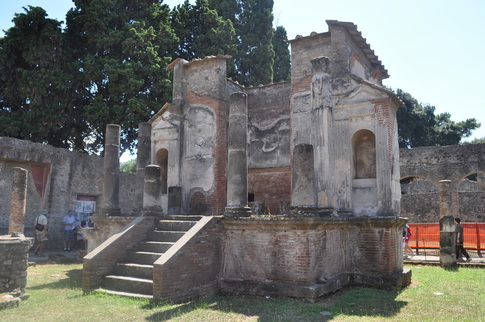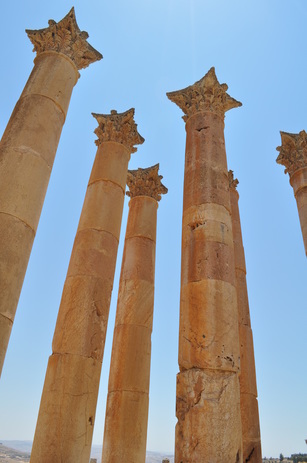|
The monumental architecture of the Ancient Greeks and Romans continues to influence and inspire modern culture. If you have never studied the Classics it can be hard to tell the difference. However, there are subtle (and not-so-subtle) differences. Knowing them can enhance your understanding of the ancient world, or at least give you something to talk about at your next dinner party. All About The Angles Greek temples are often constructed up on a mountain or on high ground. The approach to the temple is itself an experience - a winding path can keep the temple out of view. It is only emerging from a front gate or a path that a tourist experiences the structure in its majesty – seeing the long and the short sides simultaneously. Greek temples are often rectangular in form, the entrance isn’t necessarily clear and they are best approached at an angle. The ingress to a Roman temple is quite obvious. Roman priests ascended a distinct staircase into a temple which was built upon a pedestal. The Temple of Isis in Pompeii, Italy is dedicated to an Egyptian goddess but its Roman construction is apparent. The Temple is set on a platform with a precise main entrance and is a little boring to look at from certain angles. Roman temples are best appreciated from the front. The Columns On The Temple Go Around and Around Generally, the columns of a Greek temple are peripteral – constructed around the temple on all sides. The Temple of Hera (II) at Pestum, Italy is located in a former Greek colony called Poseidonia. Although built using local tufa (not marble) this structure is easily identified as Greek due to its use and placement of columns. If columns are the first feature you notice when looking at a structure – Greek is your safe bet. Roman temples often feature columns in the front. The large Corinthian (fanciest type) columns of the Temple of Artemis in Jerash, Jordan are so large they make the visitor lose their natural sense of scale. Jerash was a Hellenistic (Greek) town, which later became Roman territory in 63 BC so it is a good location to compare the two building styles. Sometimes the sheer size of Roman columns is enough to characterize a structure was built with a Roman eye. Remember the Romans conquered vast stretches of land so you will see Roman-built structures outside of Italy. Some Roman emperors (like Hadrian) admired the Hellenistic world so much they copied Greek architecture, making this topic a little more complicated than I have treated it here. From the use and placement of columns to the scale and entrance of these buildings the architects of the ancient world left us with a wide array of structures to enjoy. Disclaimer: This post is intended to aid non-classicsts and non-architects identify ancient buildings. This is by no means a replacement for actual education.
78 Comments
|
AuthorRosina Eileen Khan is an Archives
January 2017
Categories |



